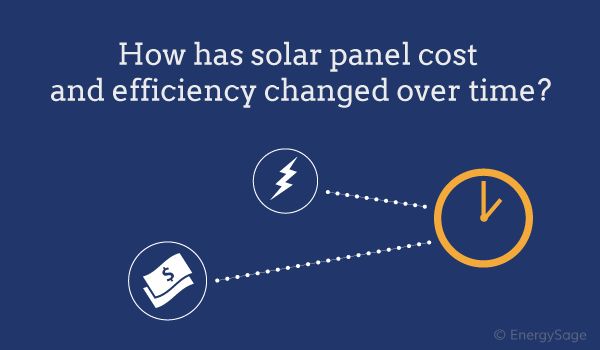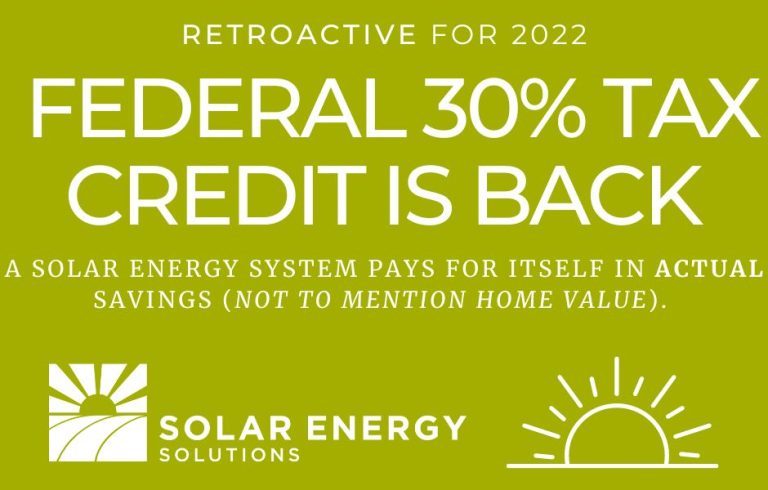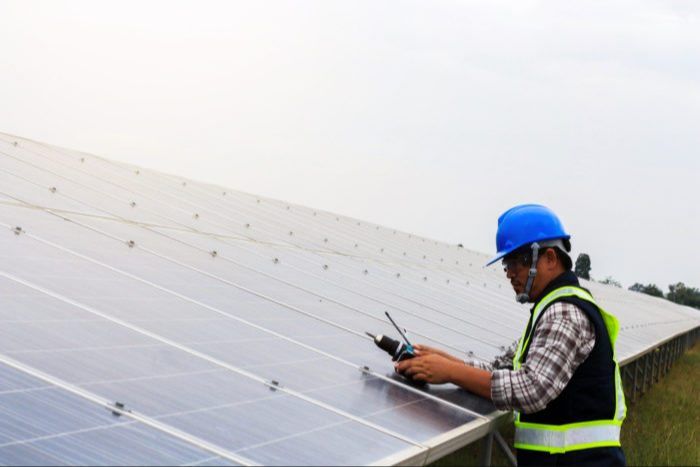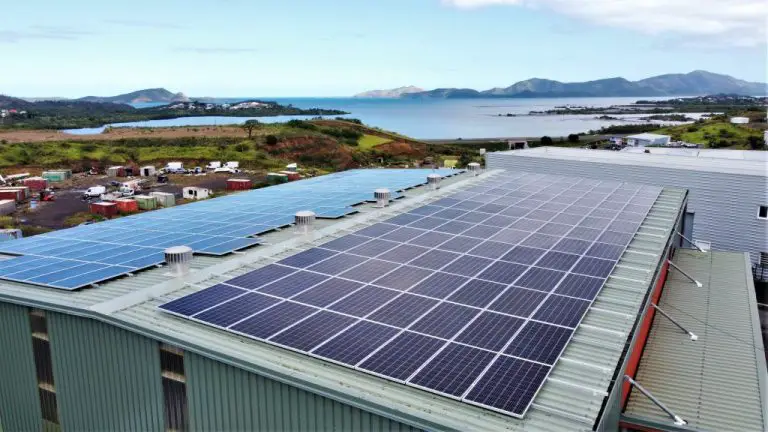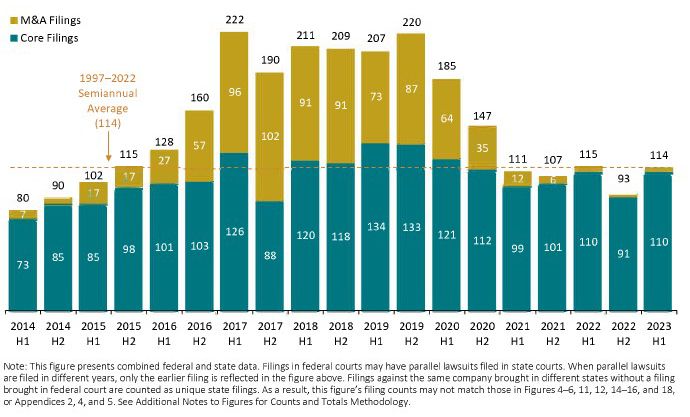How Does A Solar Panel Generator Work?
Solar panels, also known as photovoltaic (PV) panels, are devices that convert sunlight into electricity. They are made up of solar cells, which are assembled together and sandwiched between a glass sheet on top and a plastic backing on the bottom. The purpose of solar panels is to harness the sun’s energy and convert it into electricity that can be used to power homes, buildings, and devices.
When sunlight hits the solar cells inside a panel, it knocks electrons loose from the atoms in the cells. The loose electrons flow through the panel as Direct Current (DC) electricity. This DC electricity is then converted by an inverter into Alternating Current (AC) electricity, which is what powers our lights, appliances and devices. The electricity produced can be stored in batteries for use at night or on cloudy days. Any excess electricity that isn’t immediately used is fed back into the utility grid.
Parts of a Solar Panel
The main component of a solar panel is the photovoltaic cell. Photovoltaic cells are made of semiconducting materials, most commonly silicon, that can convert sunlight into electricity through the photovoltaic effect. When sunlight hits the cell, the photons knock electrons loose, allowing them to flow and produce a DC electric current.
Photovoltaic cells are assembled together under sheets of glass or plastic casing, which helps protect the cells from weather damage. The cells are also connected together by flat wires and assembled onto a backing of aluminum framing, which provides structural support. The aluminum framing has drain holes to allow rain and condensation to drain off.
On the back of the panel, there is normally a junction box where the wiring from the individual cells comes together. This junction box has connectors to allow the solar panel to be linked to other panels or an inverter. The junction box is usually covered for protection against moisture and dust.
How Solar Panels Produce Electricity
Solar panels produce electricity through the photovoltaic effect. When sunlight hits the solar cells inside the panel, it knocks electrons loose from the atoms of the semiconductor material, allowing them to flow freely. The solar cells have an electric field that acts to force the electrons freed by light absorption to flow in a certain direction, creating a Direct Current (DC).
Solar cells are made of semiconductors such as silicon that have unique electrical properties. When light hits the solar cell, photons with enough energy to dislodge electrons are absorbed. This generates electron-hole pairs as electrons gain energy from the photons to jump from the valence band to the conduction band. The electrons in the conduction band are free to move and create current flow.
The electric field built into the solar cells provides directionality for the current. The top layer of the cell is negatively charged, while the bottom layer is positively charged to form the electric field. This causes the electrons freed by sunlight to flow from the p-type layer on top to the n-type layer on the bottom, generating a DC current.
In summary, when sunlight strikes the solar cell it frees electrons to create current. The semiconductor properties and electric field of the solar cell cause this DC current to flow in one direction, which can then be captured and used to power electrical devices and equipment.
Connecting Solar Panels Together
Solar panels can be wired together in series or parallel depending on the system voltage and power requirements. Wiring panels in series increases the voltage while wiring in parallel increases the current. Most residential systems wire panels in series to get the high voltages needed to efficiently convert DC to AC.
When wiring solar panels in series, the positive terminal of one panel is connected to the negative terminal of the next panel. This adds up the voltages of each panel together. For example, wiring two 12V panels in series produces 24V. More panels can be added to increase the voltage further.
In parallel, all the positive terminals are connected together and all the negative terminals are connected together. This keeps the voltage the same but sums the current of each panel. Wiring two 5 amp panels in parallel produces 10 amps at the same voltage. Parallel connections are commonly used when more power is needed at a given voltage.
Bypass diodes are also wired across solar cells inside panels. If a cell is shaded or damaged, the diode will bypass it to keep the good cells generating electricity. This prevents the bad cell from dragging down the performance of the rest of the panel. Proper wiring helps panels work together efficiently.
Inverters
Inverters play a critical role in solar panel systems by converting the DC (direct current) electricity produced by solar panels into AC (alternating current) electricity. This allows the solar power to be used in your home and fed back into the electrical grid if your system is connected.
The inverter connects to the DC output of your solar panels and converts that power from DC to AC. The inverter also manages the voltage and current output to make sure it matches and syncs with the grid power. High quality inverters will provide surge protection, monitoring, and safety shutdowns if the grid power goes out.
Grid-tied solar systems use the inverter to connect the solar panel system directly to the utility grid. This allows any excess solar power to be sent back into the grid, effectively running the electric meter backwards and reducing your overall utility bill. Grid-tied inverters must match the voltage and phase of the grid power perfectly to seamlessly integrate.
For off-grid solar systems, the inverter serves a dual purpose. It converts DC solar power to AC, but also charges batteries and disconnects from the load when the batteries reach full charge. This provides a stable AC power source even when the sun isn’t shining.
No matter the specific solar panel setup, the inverter is the essential device that converts the raw solar power into usable AC electricity for your home or grid while managing the integration with batteries and the utility connection.
Batteries
Solar panels produce electricity whenever sunlight hits the panels, but that electricity needs to go somewhere. Batteries allow solar panel systems to store excess electricity produced during the day to be used at night or on cloudy days.
The two most common types of batteries used in solar systems are lead-acid batteries and lithium-ion batteries. Lead-acid batteries are less expensive but don’t last as long as lithium-ion. Lithium-ion batteries have a longer lifespan and can be discharged deeper without damage, but have a higher upfront cost.
When sizing a battery bank, it’s important to consider how much storage is needed. Factors like weather, electricity usage, and the number of days the system needs to provide power when there is no sun all determine battery bank size. Properly sizing the battery storage allows a solar system to provide continuous electricity even when the sun isn’t shining.
Mounting Solar Panels
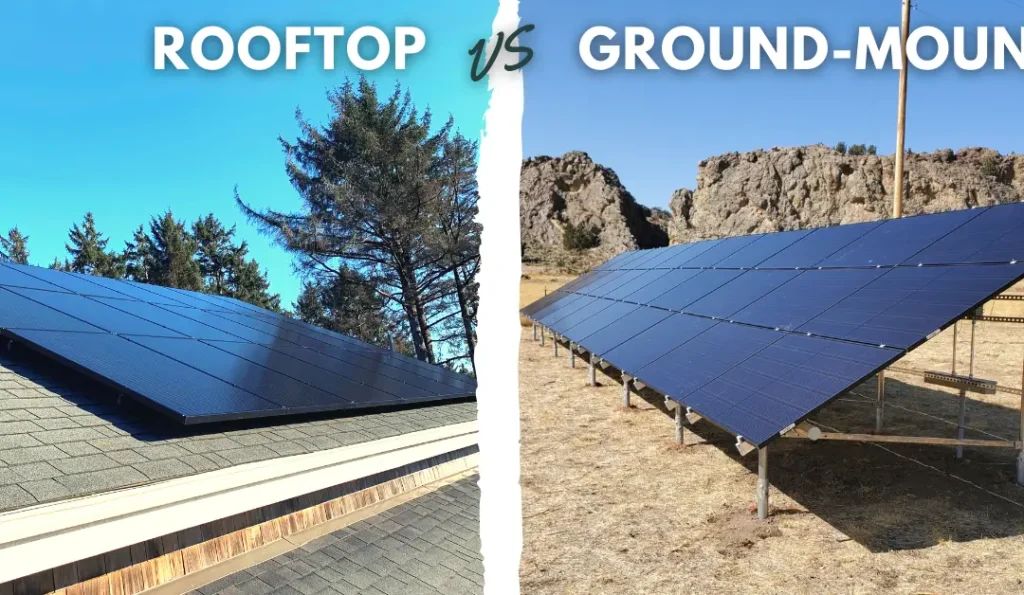
Solar panels need to be mounted properly to maximize their electricity production. There are two main options for mounting solar panels: roof mounts and ground mounts.
Roof mounts involve attaching solar panels directly to your roof. This is the most common residential installation method. Panels are mounted using railing systems and flashed where they attach to the roof to prevent leaks. Roof mounts maximize space and don’t take up usable yard area. However, roof conditions like age, material, and angle affect how well solar panels can be mounted.
Ground mounts involve installing racks onto the ground and mounting solar panels to them. This is commonly done for larger commercial systems and when roof space is limited. Ground mounts allow the panels to be tilted at an optimum angle to maximize sunlight exposure. However, they take up additional yard space and require concrete footings for support.
The angle and orientation of solar panels are also important factors for maximizing production. In the northern hemisphere, panels should face south, and in the southern hemisphere, they should face north. The ideal tilt angle equals your latitude. However, azimuth and tilt can be adjusted based on your particular conditions and goals.
Sizing a Solar Panel System
Properly sizing a solar panel system is crucial to ensuring it can meet your electricity needs. The size of the system depends on three main factors:
Calculating Electricity Usage
The first step is calculating your average daily electricity usage measured in kilowatt-hours (kWh). Evaluate your monthly utility bills to determine your average kWh usage per day. Be sure to factor in any additional future electricity needs.
Panel Wattage
The wattage, or power output, of each solar panel affects how many you need. Standard residential panels often range from 250-400 watts. Higher wattage panels will require fewer panels, but cost more per panel.
Number of Panels
To determine the number of panels, divide your average daily usage by the wattage of the panels you plan to install. For example, if you use 30 kWh per day and install 300W panels, you will need 30,000W ÷ 300W = 100 panels. Add around 20% more panels to provide excess energy on low sunlight days.
Maintenance
Like any electrical system, solar panels require some periodic maintenance to keep them working efficiently. Here are some of the key maintenance tasks:
Cleaning Solar Panels
Dirt, dust, snow, and other debris can accumulate on the surface of solar panels, blocking sunlight and reducing power output. It’s recommended to clean panels every couple months, or more often if they get dirty quickly. Use a soft brush and mild detergent and water to gently clean the panel surface.
Checking Connections
Inspect all wiring connections to make sure they are tight and corrosion-free. Loose connections can reduce power output or cause system failures. Check that mounting hardware is properly secured. Carefully examine cables for any damage or deterioration.
Monitoring Production
Keep an eye on daily power production from your solar system to make sure it’s meeting expectations. Drastic drops in output could indicate a problem like shading, dirty panels, or a system failure needing repair. Most solar installations have monitoring hardware or software to track system performance.
With proper maintenance, solar panel systems can provide decades of reliable, clean power generation.
Costs
Installing a solar panel system requires a significant upfront investment, but the costs can vary widely based on system size, equipment, location, and available incentives. Here is a breakdown of the main costs involved:
Equipment Costs
The solar panels themselves account for around 25-35% of the total system cost. Typical panel prices range from $0.75-$1.50/watt, with higher efficiency and more durable panels costing more. Other hardware like inverters, racking, and wiring will add another 25-35% to equipment costs.
Installation Costs
Professional installation accounts for 10-25% of the total installed cost. Complex roof designs or custom racking can increase labor time and expenses. DIY installation is possible but adds risks.
Incentives
Tax credits, rebates, and solar renewable energy credits provide an upfront discount. The federal ITC offers a 26% tax credit for systems installed in 2022-2023. Some states and utilities offer additional incentives that can reduce costs by 25-50%.
Return on Investment
With incentives applied, homeowners can recoup their investment in solar panels in 5-7 years typically. Electricity bill savings and income from sold back excess power provide ongoing returns for 20+ year panel lifespans. Maintenance costs are minimal.

